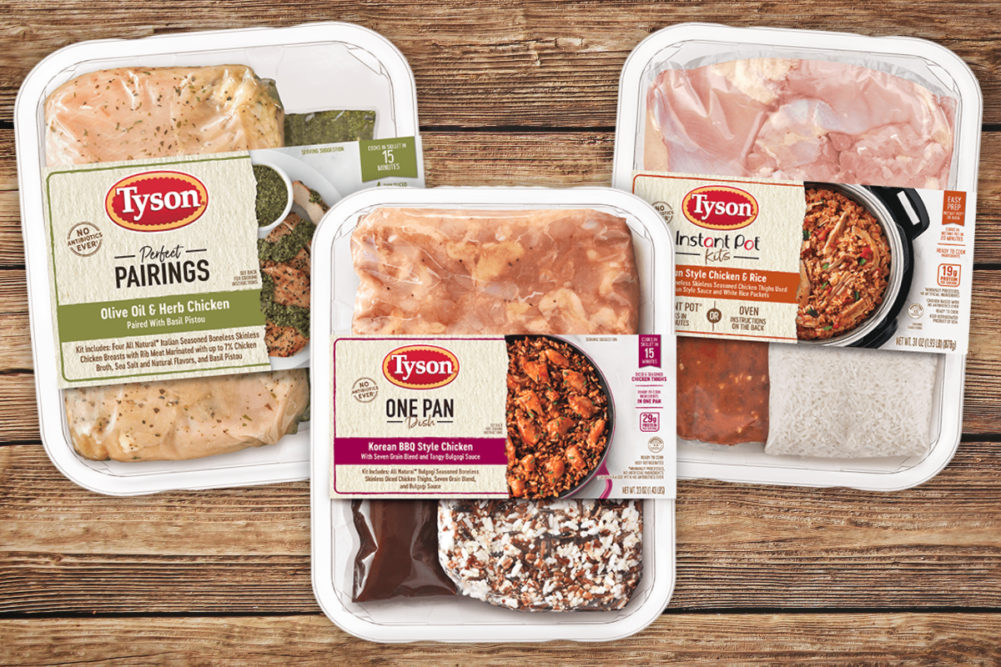CHICAGO – Consumer packaged goods company consumer insights personnel all are asking the same basic question – What’s next? The recent dramatic shift in consumer purchasing patterns due to the coronavirus (COVID-19) has upended the marketplace. In addition to needing to respond to the current crisis, manufacturers must be prepared for the aftereffects.
Risa Duesing, head of consumer insights, analytics and sensory research for Tyson Foods Inc., Chicago, said many of the changes currently taking place are due to consumers having a new routine. Stay-at-home orders have changed not just where consumers eat, but what they eat as well.
“People are working from home, schools are closed, and you have people working longer hours,” she said. “Their routines have changed, and that changes behavior.”
The behavioral changes have led consumers to make more meals from scratch and use leftovers more often.
“That’s the immediate change,” Duesing said. “Another is we are seeing consumers going to comfort foods. They are buying what they know are going to be good.”
For an established company like Tyson Foods that competes in many mainstream categories, its brands have fared well, Duesing said.
“We saw the extreme stock up at the beginning and we are still seeing that stock up behavior continuing,” she said. “Another shift we see is consumers are not as willing to try new things, which, I think, relates to their interest in comfort.”
While some consumers may be reluctant to shift away from a trusted brand, circumstances, such as out of stocks, may force a change.
“We are seeing that,” Duesing said. “It’s important for companies like us to figure out how do we keep those people? What can we deliver to them moving forward?”
Much of Duesing’s immediate focus is on understanding current consumer behavior, but she also is charged with developing an understanding of how consumers may behave after the pandemic passes.
“The shift to tried and true products that deliver is going to stick,” she said. “It’s something we’ve seen in past recessionary behavior. Many consumers are not going to have the discretionary funds to try new things all the time.”
Consumers will also continue to see foods and beverages as a source of wellness, Duesing said, which will benefit a protein-centric company like Tyson Foods.
“Before this, protein was important,” she said. “Protein was shifting to being a source of energy throughout the day for many consumers. Now, it may be swinging back to being something substantial that fills them up.”
Beyond consumption, Duesing sees consumer use of online grocery delivery and pickup services as at a “tipping point.”
“The biggest hurdle was trial; consumers didn’t know what to expect,” she said. “Now there has been a tremendous increase in trial. eMarketer (a market researcher of the digital economy) says online grocery sales are up 183% vs. a year ago. We see similar numbers coming from other sources. There is no way it is going to go away.”
Another question is when will consumers feel safe enough to return to eating in restaurants. A continuous consumer pulse survey conducted by Tyson Foods indicates many consumers are going to continue social distancing even after restaurants open.
“They are going to continue avoiding restaurants and avoiding travel,” Duesing said. “They are going to stick with this behavior for a little bit.”
Using consumer behavior in the wake of natural disasters, Duesing said many people will eventually return to eating out.
“From a claimed perspective, many consumers coming out of natural disaster tell us they plan to cook more and eat more at home,” she said. “They are enjoying cooking and eating with their family, but it’s not going to remain. There will be a slow ramp up to recovery with some (foodservice) channels recovering faster than others.”


